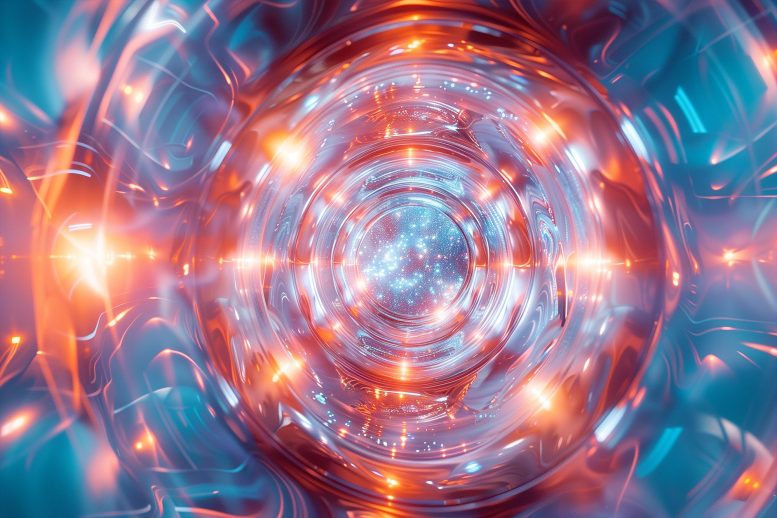
Researchers have developed advanced neutron optics, improving the efficiency and precision of neutron scattering experiments. This development allows for enhanced analysis of materials at the atomic level, paving the way for breakthroughs across various scientific domains. Credit: SciTechDaily.com
Improved neutron mirrors can increase the efficiency of material analysis in neutron sources such as the European Spallation Source, which is being built outside Lund, Sweden. The improved mirror has been developed by researchers at Linköping University by coating a silicon plate with extremely thin layers of iron and silicon mixed with boron carbide. Their study has been published in the journal Science Advances.
“Instead of increasing the power on the neutron source, which is extremely expensive, it’s better to focus on improving optics,” says Fredrik Eriksson, researcher at the Thin Film Physics Division at Linköping University.
Together with protons, neutrons form atomic nuclei. Depending on the number of neutrons in a nucleus, the properties of the element can differ. In addition, neutrons can also be used to analyze different materials at a very detailed level. This method is called neutron scattering.
Such measurements are carried out at special neutron research laboratories called neutron sources. One such laboratory, the European Spallation Source, or ESS, is now being built outside Lund. This is an investment of EUR 2 billion.
The ESS and other neutron sources can be compared to advanced microscopes that allow scientists to investigate various materials and their properties down to the atomic level. They are used in everything from studying atomic structures, material dynamics, and magnetism, to the functions of proteins.
Advanced Neutron Optics
It requires enormous amounts of energy for the neutrons to be released from the atomic nuclei. When the neutrons are released in the neutron source, they must be captured and directed toward their target, that is, the material to be investigated. Special mirrors are used to direct and polarize the neutrons. These are known as neutron optics.
Although the ESS will have the world’s most powerful neutron source, the number of neutrons available in the experiments will be limited. To increase the number of neutrons that reach the instruments, improved polarising optics are required. This is something researchers from Linköping University have now achieved by improving neutron optics on several important points to increase efficiency.

Anton Zubayer, PhD student at Linköping University, observs the magnetronic sputtering process. Credit: Olov Planthaber
“Our mirrors have better reflectance, which increases the number of neutrons that reach their target. The mirror can also polarize the neutrons into the same spin much better, which is important for polarized experiments,” says Anton Zubayer, doctoral student at the Department of Physics, Chemistry and Biology and lead author of the article published in Science Advances.
He continues:
“Also, as this no longer requires a large magnet, the mirror can be placed closer to the samples or other sensitive equipment without affecting the samples themselves, which in turn enables new types of experiments. In addition, we have also reduced the diffuse scattering, which means that we can reduce background noise in the measurements.”
Technological Innovations and Future Prospects
The mirrors are manufactured on a silicon substrate. Through a process called magnetron sputtering, it is possible to coat the substrate with selected elements. This process makes it possible to coat it with several thin films on top of each other, i.e. a multilayer film. In this case, iron and silicon films are used, mixed with isotopic enriched boron carbide. If the layer thicknesses are of the same order of magnitude as the neutron wavelength, and the interface between the layers is very smooth, the neutrons can exit the mirror in phase with each other, giving a high reflectivity.
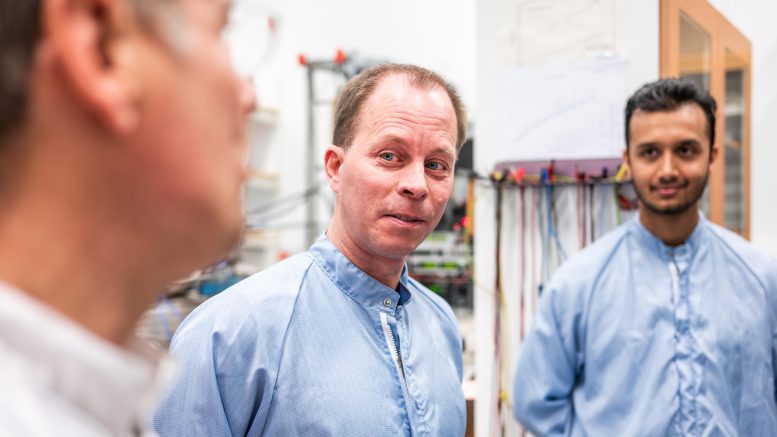
Fredrik Eriksson, associate professor, and Anton Zubayer, PhD student, both at the Department of physics, chemistry and biology at Linköping University. Credit: Olov Planthaber
Fredrik Eriksson believes that every neutron is precious and every small improvement in the efficiency of the neutron optics is valuable to improve the experiments.
“By increasing the number of neutrons and also reflecting higher neutron energies, opportunities are opened for pioneering experiments and groundbreaking discoveries across disciplines including physics, chemistry, biology and medicine,” says Fredrik Eriksson.
Facts: Neutron analysis makes use of the neutrons’ ability to behave both as a wave and as a particle. These neutrons, in turn, can have two different spins. It is important mainly for magnetic studies to be able to use polarized neutrons, i.e. neutrons with only one specific spin.
Reference: “Reflective, polarizing, and magnetically soft amorphous neutron optics with 11B-enriched B4C” by Anton Zubayer, Naureen Ghafoor, Kristbjörg Anna Thórarinsdóttir, Sjoerd Stendahl, Artur Glavic, Jochen Stahn, Gyula Nagy, Grzegorz Greczynski, Matthias Schwartzkopf, Arnaud Le Febvrier, Per Eklund, Jens Birch, Fridrik Magnus and Fredrik Eriksson, 14 February 2024, Science Advances.
DOI: 10.1126/sciadv.adl0402


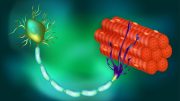

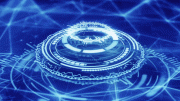

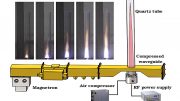

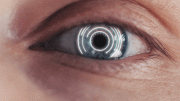
The interaction and balance of topological vortices not only demonstrate the beauty of mathematics, but also change the way humanity understand nature. Studying topological vortices can greatly expand the boundaries of humanity cognition.
Unlocking the inner secrets of matter with next-generation neutron mirrors. The key is to see the essence via phenomena.
According to topological vortex gravitational field theory, vortices (matter) and antivortices (antimatter) are formed simultaneously, with the same geometric shape but opposite directions of rotation. Countless topological vortices make spacetime motion more complex via the synchronous effects of superposition, deflection, and twisting. Therefore, there is so much data coming in from the LHC, the most powerful accelerator in the world, that recording it all has never been an option.
All observable movements in the physical world are inseparable from the interaction of topological vortices, including human observational behavior itself.
The universe does not do algebra, formula or fraction. The universe is geometrythe, and is the superposition, deflection, and twisting of geometric shapes.
Today, we have already entered the era of the internet. With the help of artificial intelligence and big data, discussions on scientific knowledge have become open and transparent. However, a group of editors of so-called academic journals (such as Physical Review Letters, Nature, Science, etc.) are self-righteous and mystifying themselves. They only care about their own so-called sufficiently high priority rating, general significance, discipline, novelty, etc., and do not care about what science and pseudoscience are.
Science and pseudoscience are not determined by a publication, an organization or a person, nor by you or me, but by mathematics the final say. Physical models must be based on mathematics or mathematical models in order to be scientific, convincing, and in accordance with natural laws.
The origin of geometry lies in the concerns of everyday life. The branch of geometry (mathematics) known as topology has become a cornerstone of modern physics. Topological vortex and antivortex are two bidirectional coupled continuous chaotic systems. They exhibit parity conservation, charge conjugation, and time reversal symmetry. The synchronization effect is extremely important in their interactions. The synchronization effect of the superposition, deflection, and twisting of multiple or countless topological vortices will make spacetime motion more complex. To understand this complex world, physics should respect the authenticity of topological vortex in low dimensional spacetime, rather than simply relying on a few formulas, numbers, or imagined particles.
Spin is a natural property of topological vortices. Spin is synchronized with energy, spin is synchronized with gravitation, spin is synchronized with time, spin is synchronized with evolution. The perpetually swirling topological vortices defy traditional physics’ expectations. One physical properties of topological vortices is them to spontaneously begin to change periodically in time, even though the system does not experience corresponding periodic interference. Therefore, in the interaction of topological vortices, time is both absolute and relative,and physics often requires treating space and time at the same level.
Low-dimensional spacetime matter is the foundation of high-dimensional spacetime matter. Low-dimensional spacetime matter (such as topological vortex) can form new material structures and derive more complex physical properties via interactions and self-organization. It is extremely wrong and irresponsible to imagine low dimensional spacetime matter using high-dimensional spacetime matter,such as a cat in quantum mechanics.
Science must follow mathematical rules. For example, the Standard Model (SM) is considered to be one of the most significant achievements of physics in the 20th century. However, the magnetic moment of μ particle is larger than expected, revealed by a g-2 experiment at Fermilab, suggests that the established theory (such as SM) of fundamental particles is incomplete. Furthermore, the SM omitting gravitation, it not involved the time problem and when the particle movement starts. Mathematics is the foundation of science. Physics must respect the scientific nature of mathematics and mathematical models. The SM must be based on mathematical models in order to be scientific, convincing, and in line with natural laws.
I hope researchers are not fooled by the pseudoscientific theories of the Physical Review Letters (PRL), and hope more people dare to stand up and fight against rampant pseudoscience.
The so-called academic journals (such as Physical Review Letters, Nature, Science, etc.) firmly believe that two high-dimensional spacetime objects (such as two sets of cobalt-60) rotating in opposite directions can be transformed into two objects that mirror each other, is a typical case of pseudoscience rampant.
If researchers are really interested in Science and Physics, you can browse https://zhuanlan.zhihu.com/p/643404671 and https://zhuanlan.zhihu.com/p/595280873.
The Physical Review Letters (PRL) is the most evil, ugly, and dirty publication in the history of science. Nature and Science have been influenced by Physical Review Letters (PRL) and are even more notorious. The behavior of these pseudo-academic publications has seriously hindered the progress and development of human society in science and technology.
I am well aware that my relentless repetition can make some people unhappy, but in the fight against rampant pseudoscience, that’s all I can do.